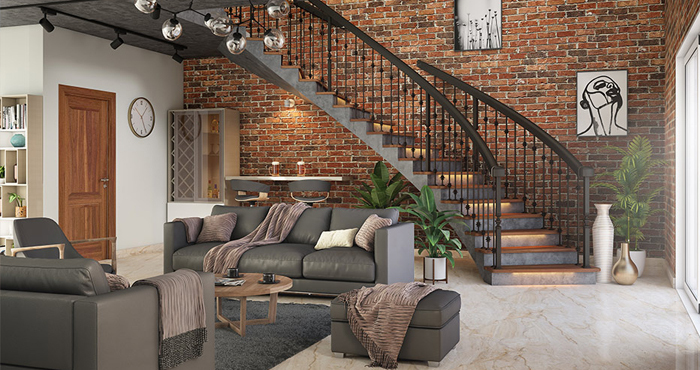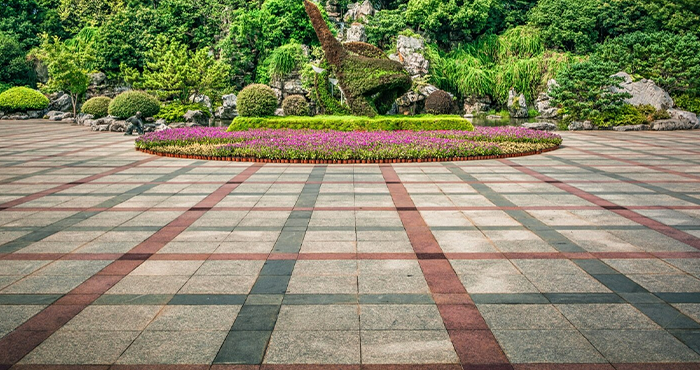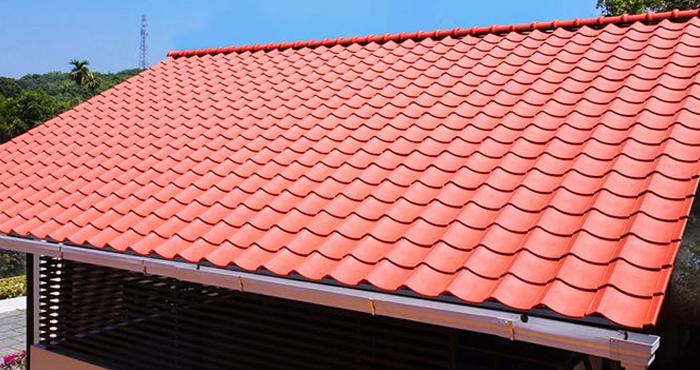Do you know that cladding is now considered one of the best ways to protect walls from corrosion and weathering?
When you leave the walls exposed to the environment, the surface can wither due to continuous wear and tear and corrosion. In addition, it can be a crack formation due to long-time exposure to scorching sun rays or stains due to rain and dampness. So, it would help if you prevented the walls from getting damaged since they form one of the major parts of the entire foundation.
But the question is how!
Painting the walls is an option but might not be as efficient as the structure needs. So, instead of paint, you can use ceramic tile cladding to keep the walls safe and protected from different weathering elements, daily wear and tear, and constant corrosion. In this article, we will highlight what ceramic tile is and how you must choose between glazed and unglazed tiles for cladding purposes.
What Is Cladding, And Which Tile Is The Best For It?
Before discussing what glazed and unglazed tiles are, you must understand the concept of cladding. Often, walls are coated with various types of paints and chemical solutions to prevent them from weathering due to weather conditions, climatic changes, etc. However, the longevity differs a lot, so your walls won’t stay protected for a long time.
This is where cladding comes into play. It is a process where various tiles are added over the walls to protect them from external weathering and corrosion. These stronger tiles are strong enough to stay intact for years and keep the foundation intact and safe from damage. Some of the benefits of tile cladding in walls are:
- When you add tiles for cladding, these protect the base wall from weathering and corrosive damage. As a result, the walls stay upright for a long time without weakening.
- Often you will get weather or water-resistant cladding tiles in the market. These are highly efficient in preventing moisture absorption and dampening of the walls over time.
- Another significant benefit of using tile cladding for walls is its ability to prevent mold growth. As a result, the interiors remain safe, and living standards are highly improved since no fungus can thrive in the walls.
- It is a one-time investment as the tile used for cladding can last long and won’t compel you to frequent repair and maintenance.
There are several types of cladding materials you can find on the market. However, ceramic tile cladding has proven way more affordable and efficient in protecting the base wall from damage and weathering.
How Are Ceramic Cladding Tiles Made?
Most tile and brick cladding manufacturers in India try to stick to the traditional way of making ceramic tiles. First, the raw materials are mixed to form a liquid paste with enough viscosity. It is then poured into various molds shaped like tiles. The molds usually vary in size to ensure you can quickly get different-sized tiles.
The molds are kept under the sun for a long time to harden the raw material. This process is often termed sun baking and is crucial before the hardened tiles are further inside a furnace. Usually, the temperature inside the furnace is very high so that the wall cladding tiles can harden and achieve a solid structure properly. If no additional chemical is mixed in the raw material, the tiles will have a brick color, whose intensity depends on the temperature inside the furnace.
What Is Glazed And Unglazed Ceramic Tile?
The ceramic tiles used for wall cladding can be divided into two types. These are:
- Unglazed
- Glazed
The difference between glazed and unglazed ceramic tile is quite simple to understand. When the tiles are sunbaked, a glaze coat is applied over the surfaces before they are put inside the kiln furnace for burning. Once the tiles are put inside the furnace, the glaze components fuse with the material to form a shiny and glossy surface. This is what we know as glazed ceramic tile.
When you see the ceramic tiles’ subtle shine, it’s automatically glazed. On the other hand, tiles having a rougher and courser texture on the surface are said to be unglazed. Usually, unglazed tiles acquire their colors from different types of mineral deposits in the clay from which they are made.
Most wall cladding tiles manufacturers use these mineral deposits to draw a pattern in the unglazed style. As a result, you will find the artwork running through the entire tile thickness, which is why it usually has a natural appearance. But if we talk about the glazed tiles, the design is often present only at the surface and if you break them, no artwork will be present in the thicker portion.
What Are The Benefits of Glazed Ceramic Tiles For Cladding?
Below we have described the advantages of using glazed cladding tile for walls.
- One of the significant benefits of using glazed tile is its nonporosity. It means that the tiles won’t absorb any liquid, so you won’t have to worry about stains.
- Cleaning glazed tiles is much easier due to smoother and uniform surface texture. That’s why it is often used for interior brick cladding purposes.
- If you want a visual appeal and the essence of luxury and magnificence, always go for the glazed tiles because they come in various patterns and designs.
What Are The Advantages of Using Unglazed Cladding Tiles?
If you want to use unglazed ceramic tile, its prime benefits are below.
- Unglazed tiles are thicker and best suited for protection against weathering and corrosion. That’s why using them for external purposes is way more feasible and affordable.
- Also, unglazed tiles are more resistant to cracks and chips, often used in places exposed to weathering and high traffic.
- Most tiles are unglazed and used for brick cladding for outside walls since they have a strong resistance against temperature. That’s why you won’t have to worry about them becoming weak or discolored under extreme temperatures.
How Are The Glazed Ceramic Tiles Not a Preferred Choice?
One of the significant disadvantages of using glazed ceramic tile is the higher chances of crack and chip formation. The glaze is mainly made from glass materials so it can be slightly brittle. If excessive corrosion happens, you will find cracks forming on the tiles much earlier than expected.
What Are The Limitations of Unglazed Ceramic Tiles for Cladding?
Unglazed tiles are porous to some extent, which is why they can absorb liquid. Stain formation is common for them. That’s why most manufacturers ensure to make the tiles as non-porous as possible. Also, using unglazed tiles for the interior isn’t always preferred due to the rough texture.
How to Choose The Best Ceramic Cladding Tile?
Since there are so many options for interior and exterior cladding tiles, choosing the best one is complicated. So, here are some of the tips that will help you make the right decision.
- To cover the exterior walls with cladding tiles, go for unglazed ceramic tiles. On the other hand, the glazed tiles are suitable for interior cladding.
- Ensure proper measurements of the area to be covered with the cladding tiles. Dividing this measurement with the total surface area of each tile will give you the number of tiles required to cover.
- It would be best to opt for brick cladding tile since it has the natural look and a better finish.
- Also, ensure the color of the cladding type you have chosen suits the property’s overall aesthetic appeal. For example, to create a color contrast, go for a light and dark shade.
Conclusion
In this article, we have discussed everything you need to know about glazed and unglazed ceramic tile cladding and its benefits and limitations. Based on this discussion, you shouldn’t have any problem deciding which one to choose. Besides considering the factors, we have discussed above, to help you find the best tile, check if the manufacturer is reliable.
Out of most manufacturers in the country, you can check out the brick-cladding tile collection from Jindal Bricks. Not only these are long-lasting but available in a plethora of options.
FAQ
Q. 1 What are some of the best colors for brick cladding tiles?
Many options are available for brick-cladding tiles, including terracotta, chocolate, light brown, mud, and beige.
Q. 2 Which tile is suitable for floor cladding?
You can get ceramic glazed floor tiles for cladding as they have a smoother surface finish and excellent visual appeal.
Q. 3 Who is the best cladding tile manufacturer in India?
The best cladding tile manufacturer in India is Jindal Bricks. The company provides long-lasting, durable, and water-resistant tiles at affordable rates.
Q. 4 Why is cladding important for walls?
Cladding can keep the base wall safe from weathering, corrosion, and other forms of damage. The cladding tiles also play a crucial role in adding value to the aesthetics.





